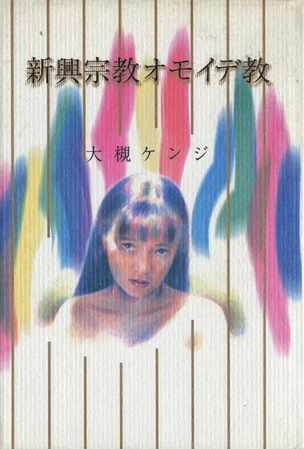Overview
Shizuku (雫) is an adult horror game published by Leaf for the NEC PC-98 on January 26, 1996. The title is about a morbid high school student that is asked by his uncle, who is a teacher, to investigate why one of the popular girls at his school suddenly went mad during class and clawed her own face, leading to him unearthing a much larger mystery. While the game is very similar to Chunsoft's sound novel titles in terms of presentation and structure, Shizuku was instead branded by Leaf as the first entry in a series called the Leaf Visual Novel Series (LVNS). This was the game that coined the term "visual novel" that is popularly used today to classify Japanese novel games and was a major influence on many early titles in the genre.
Shizuku was eventually remade in 2004 for Windows computers under the name Shizuku Renewal which featured redrawn artwork, a new soundtrack and rewrites made to the story in order for the game to be in compliance with new rules made by the Ethics Organization of Computer Software.
Development
 Shinko Shukyo Omoide Kyo by Kenji Ohtsuki
Shinko Shukyo Omoide Kyo by Kenji Ohtsuki During the mid-1990s, the sound novel genre was exploding on the Super Famicom due to the success of Chunsoft’s Kamatachi no Yoru. Naoya Shimokawa, the president and representative director of Aquaplus, noticed that, despite the genre’s popularity on consoles, no one had released a sound novel for the PC. Seeing an opening in the market, Shimokawa spoke with the newly hired Tatsuya Takahashi at the company’s eroge subsidiary, Leaf, about potentially making a sound novel. Takahashi told Shimokawa over the phone that he was confident that he could write a story similar to Kamatachi no Yoru and so Shizuku was green-lit [2].
Tatsuya Takahashi would team up with Leaf artist Tooru Minazuki who he had been friends with since his days as college student. The two had even previously created a doujin manga together but this would be their first professional work they made together. However, while the two lead the project, Leaf’s upper management required that they follow certain guidelines. The title had to be set in a high school, the protagonist had to be male and, being an eroge developer, the player had to be able to reach the first sex scene within 5 minutes of starting the game. The final stipulation was made possible by placing a bad ending near the beginning of the game that could be obtained if the player refused to investigate the story's mysteries [1].
While following these rules, Takahashi set out to make an atypical sound novel for the NEC PC-98. Leaf was still a very young company at the time so Takahashi set out to make a game that would stand out from the competition and hopefully help Leaf make a name for itself. At the time, most sound novels were traditional horror mysteries so Takahashi decided to instead make a game inspired by the novels of Kenji Ohtsuki, a musician that was famous in the early 90s for his psychological novels that often featured nihilistic themes and starred characters that felt disconnected from the world around them. Specifically, Shizuku was inspired by Ohstsuki’s “Shinko Shukyo Omoide Kyo,” a 1992 novel about a young woman named Natsumi that disappears from school and is later found to have joined a religious cult. Takahashi also noticed that themes of mental illness and criminal profiling were becoming popular in foreign horror films such as The Silence of the Lambs and decided to incorporate those elements into his story as well [2]. This mixture of themes and tones would later be classified as a “radio-wave” or “denpa” style narrative.
While developing Shizuku, a sequel featuring the same system was already being planned. So, to help unify this developing franchise, Takahashi decided to label Shizuku as the first volume in what he called the Leaf Visual Novel Series. Playing off Chunsoft’s own brand name, Takahashi called his games a “visual” novel due to his title having a larger focus on visuals compared to other sound novels of the era [1]. Talahashi’s goal of creating a title that would stand out in the market turned out to be a success as Shizuku became a cult classic after its release and the Leaf Visual Novel Series would go on to influence many future novel games in Japan.
Trivia
- While Shizuku coined the word "visual novel" the game is also responsible for popularizing the term "True End". Other games with multiple endings had previously called their canonical ending the "happy ending" or something similar. Shizuku was the first game to classify its story's real conclusion as the "true" ending, which would become a common term within the visual novel genre [1].
References
- Bungle Bungle - The official website of Tatsuya Takahashi and Tooru Minazuki, creators of the Leaf Visual Novel Series.
- TINAMIX INTERVIEW SPECIAL: Leaf's Tatsuya Takahashi & Woodal Harada (TinaMix, 2000).
Log in to comment